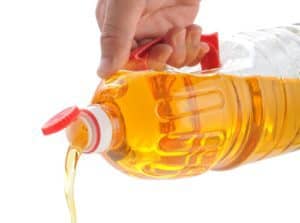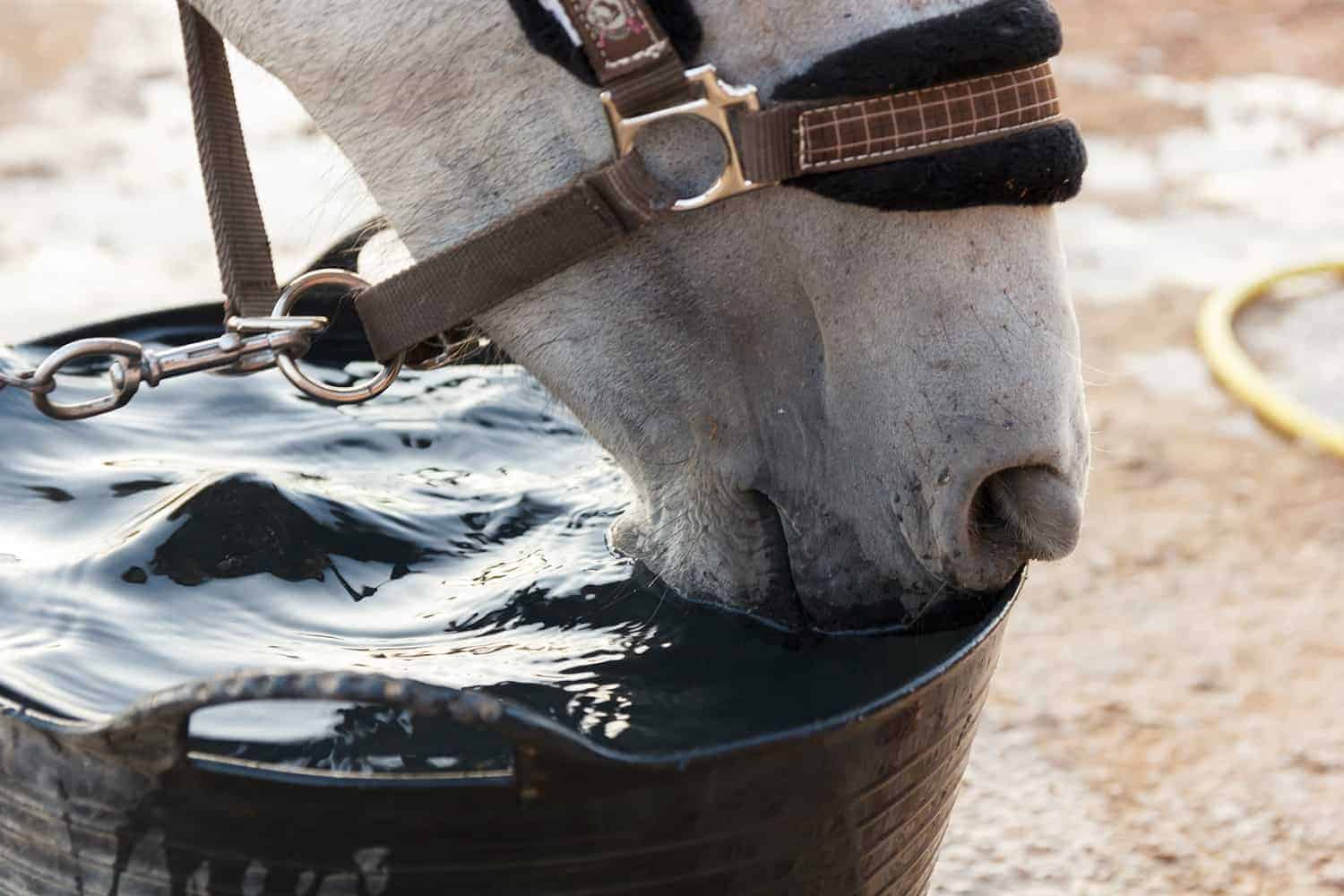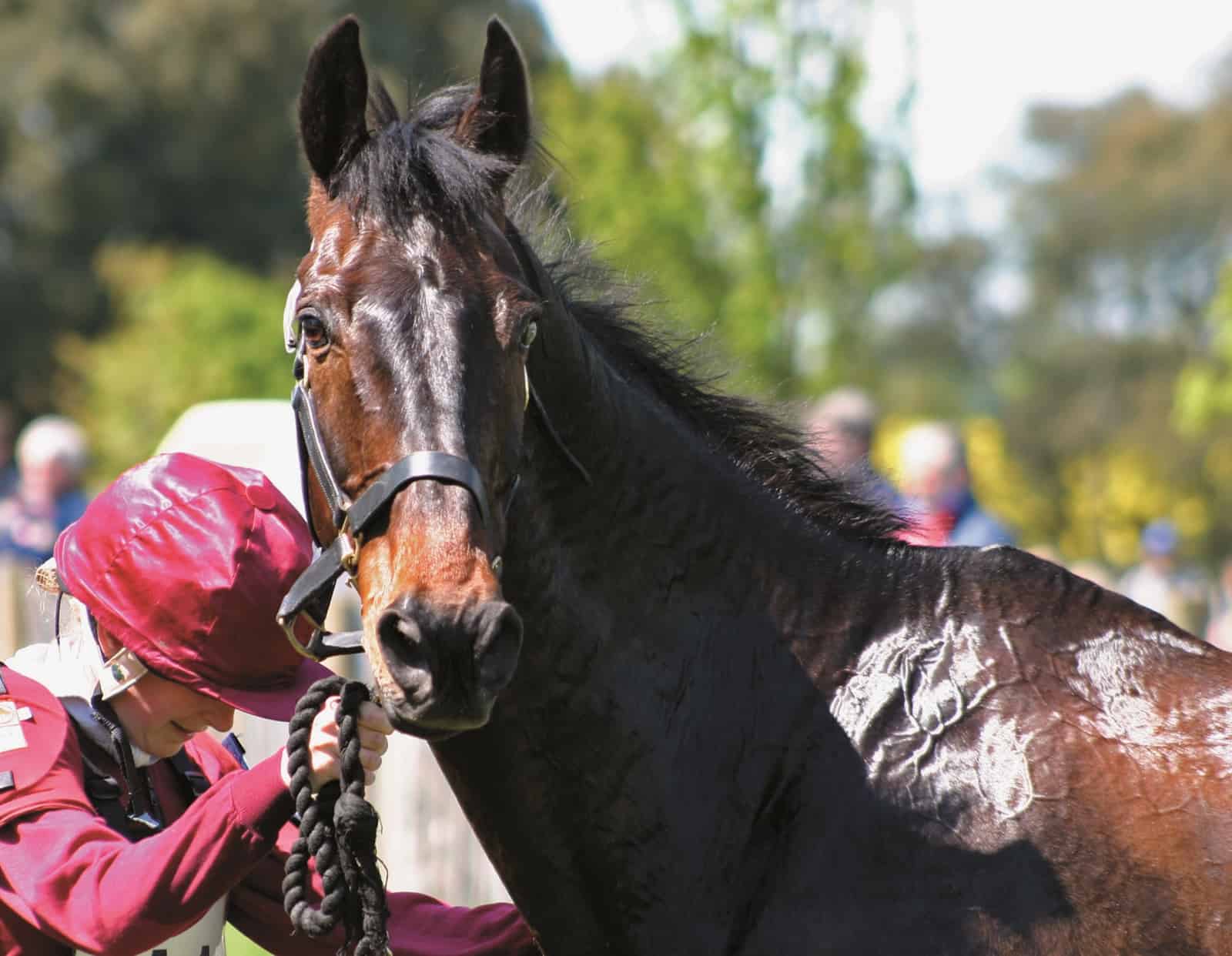Feeding Endurance Horses

Make sure your horse gets the energy, nutrients, and water he needs to tackle a long ride
Athletes need fuel to work. Endurance horses, in particular, need a nutrition strategy that will allow them to travel all day at moderate to high speeds without “running out of gas” or becoming dehydrated. They need adequate energy in a form that won’t produce excess body heat and will provide enough fluid and electrolytes to maintain hydration.
Julie Bullock, DVM, of Mount Sidney, Virginia, has been riding endurance horses for over 25 years and competes in 100-mile races. She says the endurance community is growing fast, and it’s important for newcomers to the sport to understand these horses’ nutritional needs.
Kathleen Crandell, PhD, an equine nutritionist with Kentucky Equine Research, in Versailles, has extensive background in nutrition science and has trained and competed endurance horses. “When feeding an endurance horse, we think about two programs—feeding the horse on a daily basis as we get the horse into fitness, and then a plan for what we’ll feed the horse on the day of competition,” she says.
In this article our sources will walk you through an endurance horse’s diet, from conditioning to post-race.
Conditioning Period Diets
While each horse is different, the basis of any good diet is high-quality forage (hay or pasture), says Michael Peralez, DVM, of Foothill Equine, in Arcadia, California, and head veterinarian for the 100-mile Tevis Cup, widely considered the founding ride of endurance.
When the horse’s hindgut—the intestinal tract beyond the small intestine—breaks down fiber from forage, it creates energy. “This energy source is constant rather than sporadic; microbes in the hindgut continually break down fiber and supply short-chain fatty acids to the body for energy,” Crandell says. Fiber also holds water, acting like a sponge to help keep the horse hydrated, she adds.
Your horse’s forage source might simply be pasture, if there is enough quality grass available. “If not, these horses are fed additional hay,” says Crandell. “We usually recommend grass hay or a mixed grass-alfalfa.”
She does not, however, recommend feeding endurance horses pure alfalfa as their only forage for several reasons: “One is the high calcium level in alfalfa compared with grass,” she says. “Daily intake of high amounts of calcium can be detrimental when horses are working hard. The body (becomes) accustomed to having a ready supply of calcium in the diet, and when they are working for extended periods and need higher levels, the body is slower to mobilize calcium from the body stores and ends up short. Then the horse gets into a metabolic problem.”
Alfalfa also contains more protein than grass hay—higher levels than even an endurance horse needs. The excess protein gets broken down and excreted in urine, a process that increases a horse’s water requirements and dehydration risk. Also, the digestion and breakdown process creates more internal heat than simple carbohydrate or fat metabolism, which is counterproductive when exercising in hot climates. The body uses fluid (via sweat) to dissipate heat, further increasing the horse’s water needs and dehydration risk.
Dr. Julie Bullock
As your horse gets fitter and rides get longer, forage alone might not supply all his energy and body condition needs. “This is when you may need to provide some kind of concentrate,” says Crandell. “If the horse is an easy keeper during the training period, he may do fine with just a ration balancer feed (containing protein, vitamins, and minerals) to provide what might be low or missing in the forage.”
Horses that need more calories might benefit from a high-fat, high-fiber/low-starch feed, as the fuel endurance horses use during hours on the trail is mainly fiber and fat. “The high-fat/high-fiber feeds are best because they don’t ‘wind up the horse’ as much; he may be more tractable than when fed a lot of nonstructural carbohydrates (NSC),” Crandell says.
In other words, you don’t want the horse expending energy frivolously. High-starch diets also put endurance horses at higher risk of tying-up, a muscle disorder to which they’re already prone.
“With a low-starch feed, however, some horses might not have enough energy for a long, hard ride and may have trouble replenishing glycogen stores (a major fuel that muscles use for energy),” she adds. “In these cases, a little bit of starch is okay, so incorporating something like oats (to a low-starch feed) may help.”

Fat is an important calorie-supplying component in concentrate feeds for endurance horses.
“A horse can’t eat enough during a ride to fuel work,” says Bullock. “So we feed calories that can be stored in the horse’s fat, muscles, and liver (in the form of glycogen and triglycerides) and then be burned as energy. If the horse doesn’t have enough glycogen and blood glucose during work, he will fatigue earlier. He must have glycogen stored in areas where he can mobilize it (and utilize it with fats) to supply the demands of exercise.”
There are several ways to add fat to your horse’s diet, including rice bran and oils. While all oils supply the same amount of calories, Crandell suggests using oils that have a good balance of omega-3 and omega-6 fatty acids. Omega-3s and omega-6s are essential polyunsaturated fatty acids, meaning the body cannot make them itself. Omega-3s are known to be anti-inflammatory and omega-6s pro-inflammatory, so they must be offered in a correct balance.
“Corn oil is very palatable, but high in omega-6,” says Crandell. “Oils with a better omega-3 to omega-6 balance include canola or soybean.”
Other acceptable fat sources include linseed (also known as flaxseed), sunflower seeds, and chia seeds, she says, the latter of which are the highest naturally occurring source of omega-3 fatty acids and a rich source of vitamin B.
It might take your horse some time to adjust to added fat in his diet. Bullock says it takes about eight to 10 weeks for the body to adapt to using it efficiently as an energy source, so don’t start the horse on a high-fat diet a couple of weeks before an endurance ride.
Above all else, make sure your horse’s diet is super digestible. “He can’t eat enough volume, otherwise, to provide the necessary nutrients,” says Bullock. “About 4 pounds of concentrate per feeding is all the horse will (and should) eat at once.” Split the concentrate into at least two to three small meals per day.
Feeding on Race Day
Most experienced endurance riders have strategies for feeding before, during, and after competition. Like human athletes, many horses prefer to eat different foods than usual during hard workouts.
“Since the horses can only eat for a limited amount of time when they come in to a vet check, you want them to eat and drink as much as they can,” says Crandell. “Often you simply offer whatever they’ll eat. You might supply more glucose and/or starch than what you’ve been feeding daily. A meal during competition may include sweet feed because it’s something they like and will eat, to provide the fuel they need to keep going.”
Experiment to find what works best for your horse before you go to the ride, and, if possible, avoid making abrupt diet changes on race day. “If you think you’ll feed something higher in starch during competition, start adding a little ahead of time,” says Crandell. “The forage you’ll feed during the ride should be very high-quality and nutritious and very palatable.”
Some high-quality alfalfa is fine, particularly if that’s all he wants to eat during the ride, she says. But if you haven’t fed alfalfa during the conditioning period, introduce a small amount a week or two ahead of the ride or competition.
This helps the microbiota in the gut adjust to the change before ride day.
The main thing is knowing your horse and what you can feed him safely during competition. Some horses have more sensitive guts and are more prone to colic with feed changes or when eating high-carb feeds while working hard.
“Most endurance horses really can’t overeat on the day of the ride,” says Crandell, due to their high calorie needs that day. “If a horse has a sensitive gut with hard work, you may be dealing with an ulcer, and this is something people need to pay attention to,” and talk to their veterinarians about—it’s important to get to a diagnosis and treatment.
Peralez says many riders bring their own mix of “goodies” for their horses on ride day, including electrolytes (molecules that regulate water content), beet pulp, grain, commercial products, and carrots. However, “be careful with things like (carrots) so the horse doesn’t choke,” he adds.
“When you get to a ride like the Tevis, you want to be very experienced and have your horse ready,” says Peralez. “You’ve gone enough miles together that you are a team, and often your crew will know what to do and how to feed your horse because you’ve worked together before.”

Combating Dehydration
Dehydration is the most common reason horses don’t finish a ride, says Crandell. “When a horse becomes dehydrated the gut stops working properly and you no longer hear normal gut sounds,” she says.
If this happens in the middle of a ride, make sure the horse has ample opportunity to drink and eat forage. She says probiotics (e.g., yogurt, commercial powders) and/or yeast might help with gut function.
She also suggests supplementing with electrolytes, particularly if your horse is working in hot, humid conditions and will be sweating. You can mix a commercial powder in with his feed or offer it in a syringe mixed with something palatable, such as applesauce, baby food, or yogurt.
“Some pre-mixed commercial electrolyte syringes come with a buffer, to be kinder to the stomach, but they are also more expensive than mixing your own,” says Crandell. “When choosing electrolytes, make sure the first ingredient is salt and not dextrose or any kind of sugar.”
In drier and cooler conditions, free-choice loose salt or salt blocks might provide your horse with sufficient electrolytes. Bullock notes that horses generally eat whatever amount of salt they need to replenish what’s lost during sweating if they have access at all times.
“During a hot, humid competition, however, plain salt may not be enough,” says Crandell. “Salt is just sodium and chloride, and one of the other major electrolytes lost in sweat is potassium. Good-quality electrolytes will do more for the horse when he’s working hard.”

In this case, she suggests adding electrolytes to the feed about a week before competition, to get your horse used to eating them so he doesn’t refuse to later. Also give him a dose a couple of hours before you trailer him to a ride.
“Keep plenty of water and forage in front of him after giving electrolytes because it will make him thirsty,” she adds.
After you arrive and your horse has eaten and settled in, you can give more electrolytes, particularly the night before the ride. “It’s controversial, however, to give it to horses the morning of the ride—adding salt to the stomach just before they go out on the trail,” says Crandell. After you’ve reached the first mandatory vet check, however, and your horse has had time to settle down and eat something, she says you can give electrolytes.
At the end of a ride, you can give another dose. “A recent study showed that horses will rebuild glycogen stores faster if they get a salt solution right after a bout of exercise that has depleted their glycogen stores,” says Crandell. “The connection between electrolytes and glycogen is vague, but for some reason these horses replenish quicker if they have salt. Make sure he has food in his stomach before you give it.”
The Effects of Stress
The stress of travel only exacerbates hydration issues. “The worst thing that can happen with an endurance horse is if he goes off feed before he gets to the competition,” says Crandell. “If he’s not eating well, he’s not getting enough forage and doesn’t have that water reservoir in his gut to help him stay hydrated.”
A horse stressed from travel or not eating/drinking well starts out at a disadvantage because he’s already dehydrated, says Peralez. “If you have to travel very far it’s wise to get there as early as possible. Riders competing on 100-mile rides generally go several days in advance so the horse can rehydrate and become adjusted—restocking internal fuel.”
Crandell suggests giving poor travelers a hindgut buffer product before departing. Hindgut buffers help decrease the risk of hindgut acidosis in horses consuming grain or grazing lush pasture; they can also help a stressed horse.
“I found that if I gave a hindgut buffer to a horse before he got on the trailer, it helped keep him eating,” she says. “My family has had horses compete internationally, and giving a hindgut buffer while traveling keeps them eating and happy.”
Dr, Michael Peralex
After the Ride
How you feed after an endurance ride is as important as before. A horse that has just finished a long race has depleted his stores and needs to replenish quickly. He must make up the energy deficit and refill the gas tank, and the fastest way to do that is with carbohydrates, says Bullock.
“The horse loses a lot of weight during an endurance ride,” says Peralez. “A lot of it is fluid loss, but he has also used up energy stores and a lot of calories; you want to get him eating his normal diet as soon as possible.” Some horses need their normal rations increased for a few days to replenish body stores.
“You also don’t want the horse to just stop exercising,” he says, or get thrown out to pasture. “You might give him a couple days off but also do a lot of walking during the recovery period. Make sure he is able to rebound and look good, feel good, and gets his energy back. Make sure the he is eating and drinking, and then prepare for the next event.”
Take-Home Message
Feeding the hard-working endurance horse is as much art as it is science, basing a diet on good forage and finding ways to supply enough calories. It generally means experimenting with diet to determine each horse’s needs and preferences.
“Endurance riders are some of the most innovative and inventive when it comes to horse nutrition,” Crandell says. “They do a lot of tweaking and fine-tuning what they feed … because they’ve tried a lot of things to figure out what works for a certain horse.”
Written by:
Heather Smith Thomas
Related Articles
Stay on top of the most recent Horse Health news with















